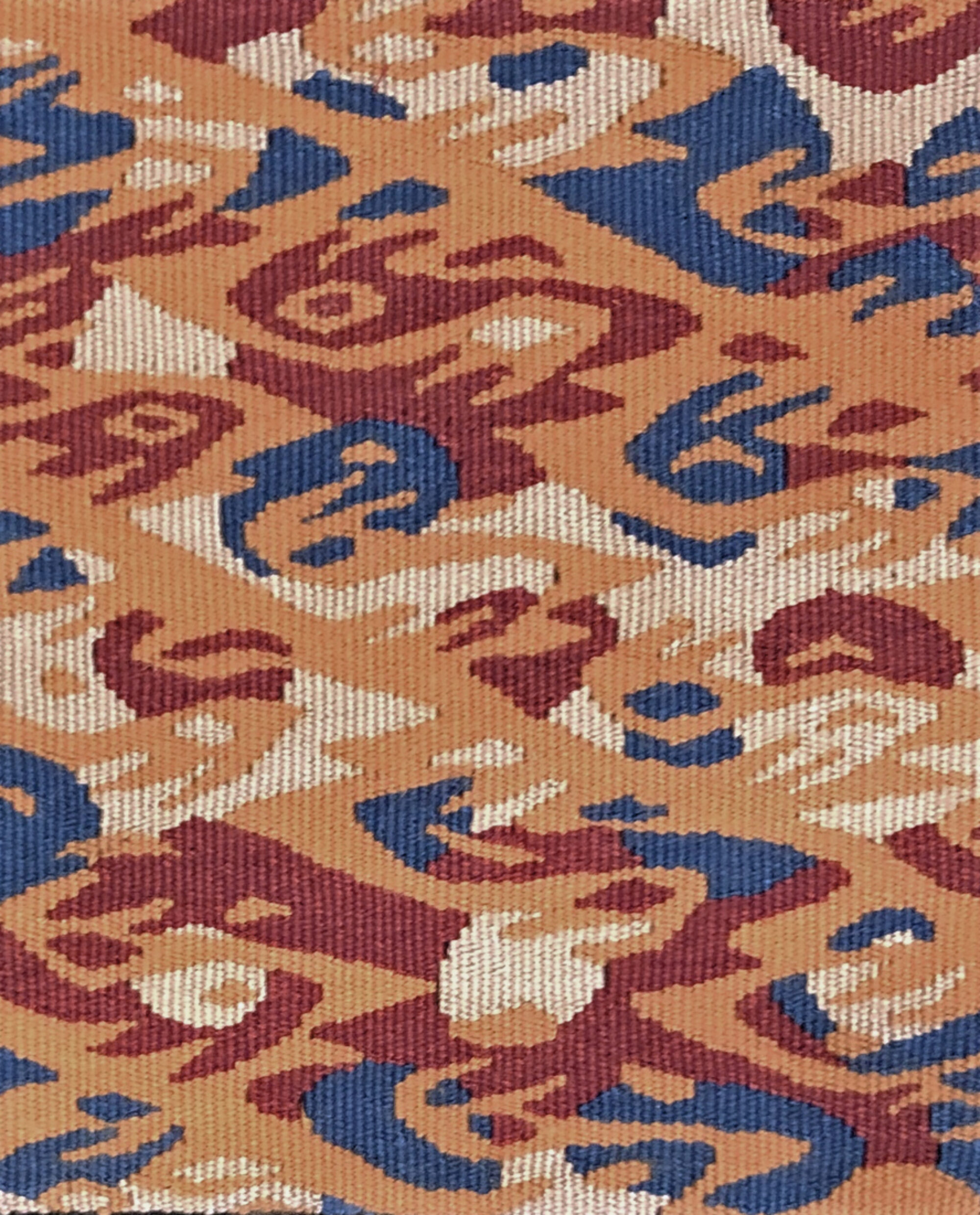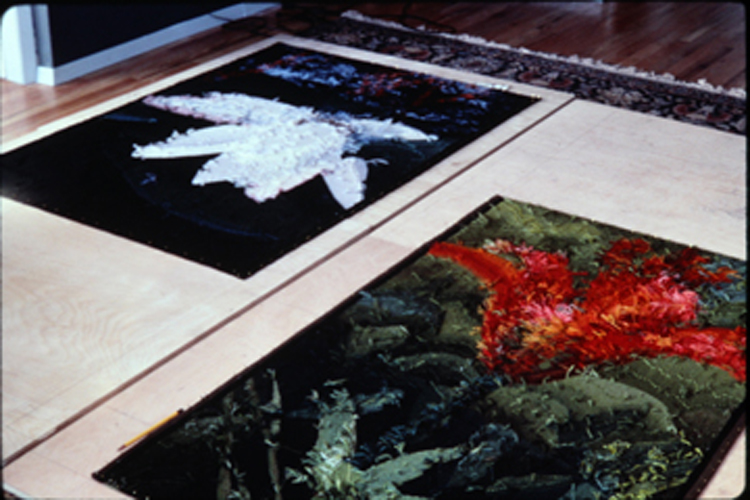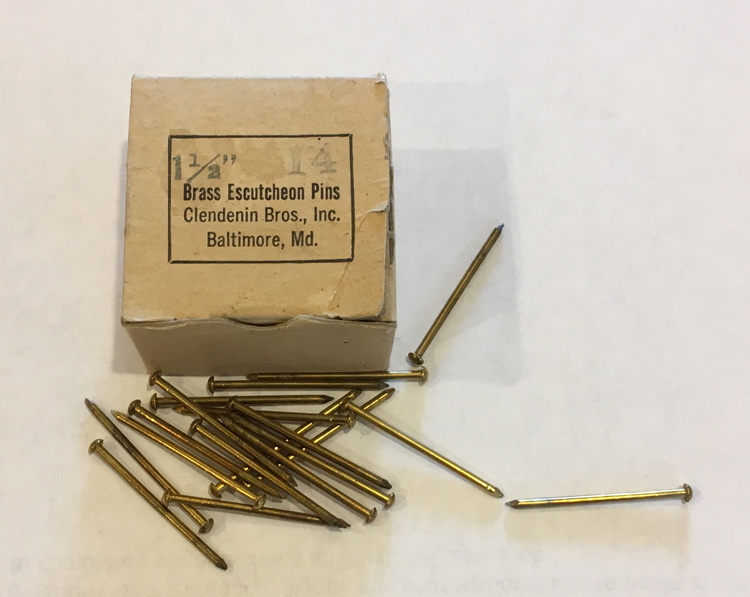Finishing. Cut weft ends to about 1/2 inch. Sew slits. Sew down any weft ends that might project beyond the sides of the tapestry when hanging. Sew the warp ends, or hem, to the back.
Measure the tapestry. Find the smallest dimension in both the width and the length. You will block the tapestry to become that size. If your tapestry is woven with wool, it is very easy to shrink excess out. You can stretch narrow sections out a bit to make them larger, but shrinking is much more effective.
Making blocking boards. Plywood comes in 4’ x 8’ sheets. You can cut a sheet in half to make it more manageable and then use as many 4’ x 4′ squares as needed for the size of the tapestry. My boards are ¾” thick plywood. Seal them with three or four coats of polyurethane to protect the tapestry from the wood. (Dry well between each coat.) The blocking boards in the picture had a grid drawn on them before the polyurethane coats were applied. The tapestry is lined up and squared to its ultimate size with the aid of the grid lines. An alternative to a fixed grid on the blocking boards is drawing the rectangle that the tapestry will become on the boards. Use a right angle so that you know it is square.
Blocking. Nail the tapestry to the boards, lining it up with the grid lines or drawn rectangle. Use rust proof nails, e.g. solid brass, purchased from a marine supply store. The box in the photo contains 1.5” nails. I actually use 1.25” nails, which are the size of the nails scattered around the box. Hammer in the rust proof nails about every 1.5 inches. Hammer the nails so that they slant, with the head of the nail pointing out. This will minimize any pulling of the tapestry as it shrinks.
Fill a bucket with water. Heat your iron to the hottest setting. Use a thick rag – like an old washcloth or hand towel. Immerse the rag in the bucket of water, wring it out, but not completely. The tapestry needs to get wet. Start in one corner. Lay the wet washcloth on the tapestry and press down with the iron. Move the iron around to steam the entire area under the washcloth. Wet the cloth again and move to an adjacent section of the tapestry. Repeat until the entire tapestry has been steamed.
Let the tapestry sit, nailed to the board until it is completely dry. Then remove the nails. The nails can be used over and over – unless they bend.


